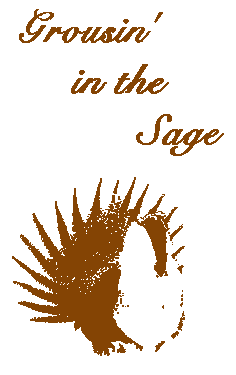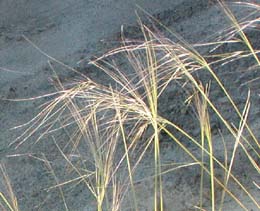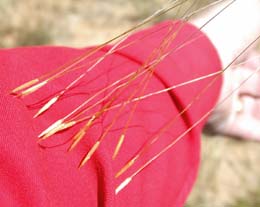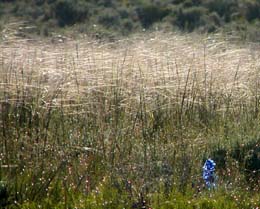






powered by SignMyGuestbook.com

| Newest
Older Previous Next Random Contact Profile Host |
blizzard warnings - 13:52 , 03 October 2013 heelerless - 21:32 , 18 August 2013 Red Coat Inn in Fort McLeod - 11:38 , 23 June 2013 rushing into the waters - 09:53 , 21 June 2013 choosing a spot - 17:43 , 27 April 2013 |
Stipa comata
The first species of grass that I learned to recognize (other than Kentucky bluegrass, which doesn't count, because you don't "recognize" bluegrass, you just mow it and play on it) was Stipa comata.

Now, I didn't learn it as that. Didn't learn the Latin name for this species until at least the beginning of the third decade of my life. Didn't know the "formal" common name of needle-and-thread grass, either. But I knew the grass.
We called it "spear grass".
'Cause that's what it was. The grass plant that grew little spears on it.

Come summer, we spent hours harvesting the spears from these plants and hurling them at each other. Throwing them hard enough that the sharp little points would go through the clothes and prick the skin, letting your victim know he or she had been speared.
You can get them through a windbreaker and a shirt if you throw hard enough. Don't waste your time on jeans, though.
Most of these spear wars took place on bicycles, in and around the empty fields near home. And occassionally, on the route to and from school in early September. Bending down to grab a handful of weapons as you peddled along, speeding up to your target and ambushing them from behind.
Got so we could spot this plant from many yards off. And would have our own little arms races, as you peddle frantically to the only weapons cache in sight.
Little did we know or care that we were distributing the seeds for these plants. Or that the long, long awn, which curled when dessicated, would catch even the lightest breeze and twist and turn the pointed seed so that it would burrow into the ground.
And I know it never entered our minds that the presence of these plants was an indication of good range condition. That Stipa is a favored food of livestock, and presumably of their predecessors, the bison. And an absence or shortage of Stipa often meant the land had been overgrazed.
All we knew was they flew straight, and people yiped when you threw it right.
This spring's moisture has been a boon for the wildflowers. Literally the best I can remember.
But it's been great for the grasses, too. Which keeps the cowboys happy, and makes life easier for the folks who manage the range.
And the Stipa.
It's been good for the Stipa, too.

(And yes, I speared some heelers on Friday. They pretended not to notice.)